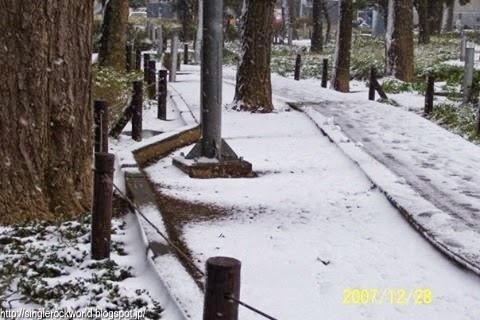After waiting for almost two years - it finally snowed! I am so happy! I immediately dressed and went out to the nearest garden for a walk. Just in case, you didn't know which garden I am talking about - read up my post on the Bunkyo Green Court. And the snow is like what I imagined it to be -white and fluffy snow. It quickly covered the ground.
For me, it always felt strange, not to get any snow in winter, not to mention, it sucks. The drab and gloomy weather of winter is not my favourite weather. Plus, it rains in winter in Tokyo!! That is double sucks for me! But if there is snow, then, it is different! The whole scenery became romantic. I feel that there is more purpose to visit somewhere covered in a white blanket of snow than visit some bare trees.
The garden was quite empty when I was there. It was already towards the end of the year and the offices are closed for the new year celebration. But looks like there are some people who have already enjoyed their walk in the snow and left some footprint that has been quickly covered with more snow.
The walk was peaceful and unbelievably invigorating. I love Tokyo when it snows. Everything looks like it is ready for a new start. Since I will be hibernating for one week during the new year, I am wishing you a happy new year and stay warm in this cold winter!
For me, it always felt strange, not to get any snow in winter, not to mention, it sucks. The drab and gloomy weather of winter is not my favourite weather. Plus, it rains in winter in Tokyo!! That is double sucks for me! But if there is snow, then, it is different! The whole scenery became romantic. I feel that there is more purpose to visit somewhere covered in a white blanket of snow than visit some bare trees.
The garden was quite empty when I was there. It was already towards the end of the year and the offices are closed for the new year celebration. But looks like there are some people who have already enjoyed their walk in the snow and left some footprint that has been quickly covered with more snow.
The walk was peaceful and unbelievably invigorating. I love Tokyo when it snows. Everything looks like it is ready for a new start. Since I will be hibernating for one week during the new year, I am wishing you a happy new year and stay warm in this cold winter!














































